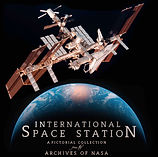

A brief History
The Soviet Union was the first nation to build and launch an operational space station: Salyut 1, on April 19, 1971. Their program was followed by 6 more single-launch Salyuts, culminating in 1985 with the rise and development of its successor - Mir.
Meanwhile in May 1973, to compete with Salyut 1, the U.S. built and launched Skylab - a makeshift orbital workshop out of a spare Saturn V third stage tank, and launched aboard the last Saturn V on May 14. The purpose of the program was to expand the understanding of the effects on humans while living in weightlessness for long periods of time, and carrying out human beneficial experiments in Physics, Astronomy, Biology, Chemical Engineering and Mechanical Manufacturing.
Nine astronauts flew on Skylab, before it fell back to Earth and crashed in Australia on June 11, 1979.
In 1984, President Ronald Reagan - in his State of the Union address speech at the White House, announced for NASA to construct a permanent orbiting space station, with the ability to create peace between the Soviet Union and the United States, as well as collaboration with 10 or more countries and international space agencies. The NASA contract was signed with administrators of Roscosmos, the European Space Agency, Canadian Space Agency, the National Space Development Agency of Japan - NASDA (now JAXA), and the Brazilian Space Agency. They would call the space station 'Freedom'. Factories all over the world rushed to the floor to begin construction, and launching of the components by Space Shuttle and assembly was scheduled for late 1986. However because of the Challenger disaster in January the project was delayed; and in 1990, Congress recommended re-designs of the orbital complex blueprints to make the design more affordable and durable.
By 1993 the Soviet Union was dissolved, and when President Bill Clinton took office he directed NASA to maximize the station's scientific and technological capabilities, and leverage Russia's professional experience in orbital construction. Roscosmos of Russia and NASA of the United States were deemed the primary operators, with the four other global space agencies contributing to the project, each with their own modules and astronauts. This resulted in 16 countries that learned to work through differences in language, culture, politics, design standards, manufacturing, management and operations, and thus the name was eventually changed to the International Space Station.
During phase one of the space station program, Space Shuttles made eleven visits to Mir; while on the ground new factories and launch sites had to be built or modified through the United States, Europe, Russia, Japan, Canada, and Brazil. The Baikonur Cosmodrome in Kazakhstan, originally part of the Soviet Union's space program, was designated as one of the primary launch sites for the ISS.
The experience from the shuttle flights and engineers on the ground proved invaluable, and set the stage for the design, development and construction of the greatest engineering project in the history of mankind: a State-of-the-Art research laboratory orbiting our planet....




The 1989 artist concept to the Space Station Freedom

The design idea for Space Station Freedom, in 1991

Final Design rendering of the ISS as made in 1996